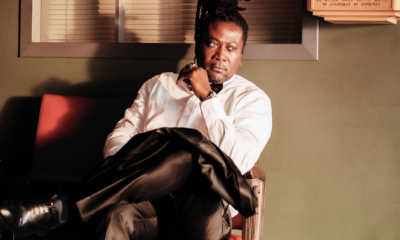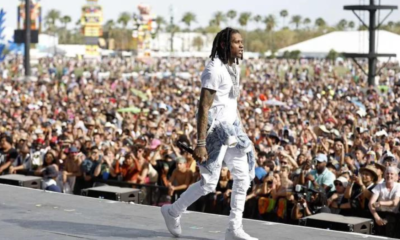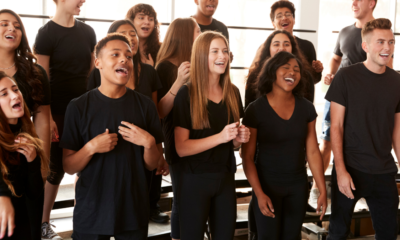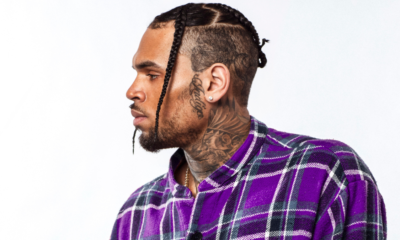Business
What Genre of Music Suits My Voice? How To Find Your Vocal Style
Awesome, you’ve decided to become a singer – but how do you decide which style of music you should sing? We have the answers for you right here…
Published
2 years agoon
By
Contributor
Posted on by vocalist.org.uk
Updated on 31st January 2023

Before we get stuck in, we just want to reassure you that there’s no reason whatsoever why you have to choose a particular genre of music and stick to it, or why you can’t choose multiple genres to sing in. There’s plenty of amazing music out there, and there’s always more to discover.
That being said, certain types of voice do tend to lend themselves well to certain genres of music. So, once we’ve got the basics of finding your own voice out the way, we’re going to break down the most popular singing styles of today and explore their characteristics and techniques.
But first…
What songs do you like?
First and foremost, you should sing what you love, because your joy and passion for singing a song that really means something to you will come out through your performance. Have you ever caught yourself – or been caught – singing in the shower, or humming along to the last thing you heard on the radio? That’s a good indicator that you liked what you were listening to!
If you’re not sure where to begin, or want to expand your bank of favourite songs, use apps and websites such as Spotify and YouTube which suggest similar songs to the ones you search for. Try creating a playlist of songs you like the sound of and keep listening through it to familiarise yourself with them all.
Find your vocal range
Figuring out what your vocal range is will make it easier for you to select achievable songs which you can use to hone your stylistic techniques.
Your vocal range, put simply, is measured from the lowest note you can sing to the highest note you can sing.
To find your vocal range, start with your normal speaking voice. Our voices naturally move up and down to help us express different meanings – but for now, stick to one note, and say “ahhh”.
While maintaining the same volume, lower your voice gradually until your voice starts to struggle or cuts out. Then, repeat in the opposite direction – you’ve now found where the lowest and highest notes you can comfortably sing sit.
It’s important that you’re honest with yourself about your vocal range – you might discover a whole lower octave when you catch a cold, or reach dizzying new heights when you stub your toe, but these are at the extreme ends of your range. If you try to factor these extreme notes into your range without properly warming up your singing voice or working to expand your vocal range, then you risk damaging your vocal cords.
How does it feel?
When you sing, you’ll feel your voice resonating within your body. You should feel your voice resonating in your chest when you’re singing in your normal speaking or ‘modal’ register – this is why it’s also commonly known as your ‘chest voice’.
Singing in your modal register or chest voice is your singing comfort zone – as this is naturally where you’ll aim your singing voice, try and find some songs that feel like they fit into this natural register before trying anything more adventurous.
As you raise and lower the pitch of your voice, you’ll feel it resonate in different parts of your body – up towards your head, and down towards your diaphragm. You may feel the muscles in your neck begin to tense up when you’re on the edge of your natural modal register – this is normal, but it’s your body’s way of telling you that you’re starting to overstretch yourself.
The main thing you need to remember about singing is: it should feel comfortable. Of course, singing for 2 hours a night will take its toll if you haven’t yet built up your stamina through regular practice, but it should never hurt to sing. If your voice is sore or your neck muscles are feeling strained, then take a well-earned break.

How does it sound?
If you’re confident enough to sing in front of your friends, or even perform in public at a live music event such as an open mic night, then by all means go for it! But to make sure you sound your best before sharing your singing gift with the world, we suggest learning to walk before trying to run.
A good way to hear how well you sing and to pinpoint where there’s still room for improvement is to record yourself. Most smartphones and other devices will have a function which will allow you to do this.
Now listen back – does your voice suit the song you chose to sing? Don’t be put off if you don’t like the results right away – see this instead as an opportunity to develop your voice.
Imagine yourself as a singer
Do you see yourself busting several moves flanked by a legion of back-up dancers, crooning through the haze of a dingy diver bar, or raising the hairs of the entire back row’s necks in the Royal Albert Hall as you take centre stage?
Since you’ve made the decision to become a singer, then chances are you’ve got a few musical heroes you’d like to emulate. While we’d much rather you find your own path, figuring out what makes your favourite singers so great is a sensible first step.
Before we take a look at some of the key conventions of these popular music genres, we just want to remind you that, when it comes to finding your own vocal style, there is no right or wrong answer. All that matters is that you understand your own voice’s potential and can learn to use it safely to express yourself.
However, it’s important that you know the different vocal techniques used commonly within each genre, so that you can explore them for yourself – and add more strings to your musical bow!
Here’s our genre breakdown:

How to sing: Pop
Pop music has gone through many changes since the term emerged in the mid-1950s – but, for all its different sounds and styles, it’s always been on top of the game in terms of popularity. Pop songs and pop singers often get a bad rap for being overly commercial or too ‘flavour of the month’ – but, as Justin Bieber would tell you, over 80 million monthly listeners on Spotify can’t be wrong!
Pop is the genre for you if you enjoy keeping up with the latest fashion and trends. Because pop music is often aimed towards a younger audience, many pop singers tend to sing in a higher register to make their voices sound more relatable and youthful – but this doesn’t mean you can’t sing pop if you have a lower voice.
A lot of pop singers also incorporate dance moves into their performances – so if you love a good boogie, you’ve come to the right place!

To sing in a pop style, keep your voice as close to your speaking voice as you can – leave the theatrics to the Broadway singers! The reason why a lot of pop singers do this is because it’s more relatable for the listener – it’s a lot easier for 80,000 fans to get what Ariana Grande is saying to them than to put themselves in the Phantom of the Opera’s shoes.
That’s not to say pop singers are any less talented – far from it, in fact – they’re just using different storytelling techniques. Much as pop songwriters use ‘hooks’ to ensure their compositions stick in their audience’s minds, pop singers often use certain vocal techniques and deliveries to make themselves sound unique.
One such technique is ‘falsetto’, which happens when your vocal cords tighten but don’t meet in the middle, allowing more air through to produce a high-pitched, breathy sound. This vocal technique is more noticeable in male singers, such as Prince and Justin Timberlake – who both use this technique in many of their most well-known songs – but female singers can also sing in the falsetto register.
To sing using falsetto, try to imitate the voice of a child. You should feel your falsetto voice vibrating in your nasal cavity.
Another technique is called ‘vocal fry’, which happens when your vocal cords loosen and are pushed together, obstructing your airflow to produce a low-pitched, croaky sound. Many vocalists sing in the vocal fry register to achieve lower notes – two notable examples being Enrique Iglesias during the chorus of ‘Hero’ and Britney Spears at the start of ‘…Baby One More Time’.
To sing using vocal fry, imagine you’ve just woken up and are giving the first groan of the day. You should feel your ‘frying’ voice vibrating in your throat.
Famous pop singers
Justin Bieber
Beliebers in the 2010s saw young Justin grow from boy wonder to adult sensation, with his pure, innocent pre-teen tones maturing into a breathier, more intimate vocal style, often making use of falsetto:
Billie Eilish
A shining example of how pop singers can speak volumes whilst keeping quiet, Billie Eilish manages to convey a sweetness with an underlying layer of menace – all while barely raising her voice above a whisper:
Britney Spears
You don’t earn the title of ‘Princess of Pop’ without topping the charts a few times, and a big part of this is Britney’s instantly recognisable singing voice. Britney often uses vocal fry to lead into her childlike, nasal voice, which contrasts with her more adult-themed lyrics and dance moves – proving to everyone who know her from her Mickey Mouse Club days that she’s “not that innocent”:
How to sing: Rock
Pop’s tough, rebellious cousin was born around roughly the same time, but their paths began to diverge when certain singers and songwriters got some attitude and decided they wanted to stop appealing to the masses. Even going back as far as 1964, it’s easy to see the distinction between the sweet and sentimental ‘I Only Want To Be With You’ by Dusty Springfield and the harsh, visceral ‘You Really Got Me’ by the Kinks – and the gap only widened from there onwards.
You’ll enjoy singing rock if you love being loud and in-your-face – rock music is about energy and attitude! Many famous rock singers aim for high notes for dramatic effect, such as Heart’s Ann Wilson or Led Zeppelin’s Robert Plant, but don’t worry if you can’t quite reach ear-splitting pitch – as long as you sing like you mean it, you’re still going to rock!

Rock singers still come in many shapes and sizes, but the one thing they all tend to have in common is their powerful delivery. In order to keep up with the crashing drums, screeching guitars and rumbling basses, rock vocalists have to take their singing to the next level!
To sing rock, you’re going to need to master the technique known as ‘belting’ – which is essentially musical shouting. When you belt, you push your voice from your lower register, or ‘chest voice’, into your higher register, or ‘head voice’, which allows you to produce a much more powerful high note.
Depending on how ‘hard’ or ‘heavy’ the type of rock you want to sing is, you might also want to add some ‘grit’ to your singing voice. Some people have naturally speaking raspy voices, so applying this quality to their singing voices comes easily – but you can learn to add grit to your singing voice even if you speak with a cleaner tone.
Start by growling (imagining you’re an angry dog might help!) in your natural modal register, and take note of how this feels in your throat. Once you’ve got used to this, start moving your growl around – follow a simple melody (like ‘Twinkle, Twinkle, Little Star) wordlessly at first, then add the lyrics. When you’ve got the hang of this, try singing a song you want to learn with your new gritty tone.
However, both of these techniques can cause damage to your vocal cords, so it’s important to a) use them sparingly and b) take proper care of your vocal health. For more tips on how to keep your voice healthy, read this article.
Famous rock singers
James Hetfield
The voice behind the world’s biggest metal band, James Hetfield’s voice sounds like he starts each day by eating a shovelful of gravel. Don’t try to go from naught to nails straight away, though – the Metallica frontman has professional vocal coaches and hundreds if not thousands of shows’ worth of experience backing him up.
Joan Jett
Following her tenure in the all-female rock band, the Runaways, Joan Jett poured her snarling attitude into a successful solo career. When Joan tells you she loves rock ‘n’ roll, not only do you believe her wholeheartedly, but you also can’t help but agree:
Freddie Mercury
Often cited as one of the greatest rock performers of all time, Freddie lifted Queen to the heavens every time he opened his glorious mouth. Within the first 30 seconds of ‘Don’t Stop Me Now’, you can hear his mastery of belting on “turning inside out” compared to his falsetto on “floating around”:
How to sing: Jazz
A genre which evolved from the blues whilst hanging onto its raw emotion, jazz singers are often considered the most skillful. To become a true jazz singer, you’ll need to get your music theory chops up to scratch – but here’s how you can get started.
Jazz is the genre for you if you like to keep your voice down low and the lights even lower. For your listeners, it’s all about mood, but for you, the singer, it’s all about the method.

As with all areas of jazz, improvisation is a key aspect of jazz singing, with many jazz vocalists utilising such techniques as ‘scat singing’, where the voice is used to imitate an instrument. For example, try imitating the “wah, wah” of a trombone, or the “bom, bom” of a double bass.
It’s worth learning a few scales so you’ll know instinctively which notes to play around with – read our article on how singing scales can help improve your voice for some ideas.
Another key to jazz singing is how you interpret the rhythm, or ‘feel’. Jazz numbers typically have a loose ‘swing feel’ – a ‘swung rhythm’ lengthens the first beat and shortens the second, as in ‘DUM, dah-DUM, dah-DUM’, with the shortened note ‘anticipating’ the lengthened note.
Jazz vocalists play into this looseness by avoiding singing directly on the beat. Many jazz singers add to this feel by ‘sliding’ up or down to the notes they sing, giving the vocal delivery a dreamy, laid-back quality popular with ‘crooners’ like Frank Sinatra and Dean Martin.
Pitch slides are easy enough to do – just pick a note you’re comfortable singing, then gradually increase and decrease the pitch in a single, unbroken breath. Applying this technique to actual songs can be more tricky though! Make sure you know the song well first so you know which notes you’re aiming for, and plan your breaths carefully – you’ll need more air to sing those slides uninterrupted.
The best thing you can do as a budding jazz singer is start learning jazz standards – songs which have been accepted into the regular repertoire of jazz bands worldover. Not only will this expose you to and help you memorise a broad range of jazz melodies, but it will also make it easier for you to play songs with other jazz musicians, who will also be familiar with these standards, if you’re hoping to perform with a band.
Famous jazz singers
Billie Holiday
‘Lady Day’ took the weary, laid-back feel of George Gershwin’s original standard to a whole new level. Her sultry, easy delivery is the main reason why Billie Holiday’s version of this, one of the most covered songs of all time, still stands out:
Frank Sinatra
Although technically belonging to the pop and easy-listening genres, Frank infused his singing style with plenty of jazz cool. Hear the first of his many pitch slides on the word “mo-on” downwards in the first line – and notice how he almost seems to be singing to a rhythm all of his own on “ba-by kiss me”:
Ella Fitzgerald & Louis Armstrong
Legendary jazz musicians in their own right, this duet version of the jazz standard ‘Dream a Little Dream Of Me’ performed by Ella Fitzgerald and Louis Armstrong is as close as you can get to jazz 101. Lazy and lilting, which some truly inspired scat singing on both accounts, this recording has all the technique and mood you could need:
How to sing: classical and opera
The most formal musical genre on our list, as well as the most theatrical and furthest away from your speaking voice, singers of opera and classical music are usually ‘classically trained’. If you truly want to pursue classical and opera singing, then a music teacher is your best bet – but we can give you an introduction to the main characteristics.
If you love theatrics and drama, then you’re going to love opera! A strong, powerful voice that’s perfect for letting everyone from the front row to the back exactly how you’re feeling is exactly what the opera ordered:

In the broadest sense, opera singing usually consists of classical singing set to a story in a theatre setting. Songs which are sung in a classical style, such as ‘canatas’ or religious ‘oratorios’, may sound similar, but would not be classed as opera.
To our modern ears, classical singing doesn’t sound all that close to the way we pronounce words in everyday conversation. This is because a classical singer pronounces words differently – vowel sounds are modified to allow the singer greater control of certain syllables at more extreme pitches, and clear diction is much more important, so consonants are more pronounced at the end of words.
One thing you’ll notice if you’ve ever watched an opera performance is that opera singers project their voices at a much higher volume than other singers. This is because opera is much older than microphones and other amplification technology – back in the day, opera singers had to project their voices over the orchestra pit so their audiences could hear them.
Another thing you’ll notice about opera performances is that many of them are written – and sung – in Italian. This again is largely due to tradition – opera itself originated in Italy, and ‘opera’ is the Italian word for ‘work’ – and many composers of opera opted to continue writing in Italian.
Don’t worry – we’re expecting you to become fluent in Italian just so you can sing opera! Understanding the meaning of the lyrics you’re singing will help you connect to the song’s emotional content, however, and will help you to emphasise key words and phrases to convey those emotions.
We also get the following voice classifications from Italian – knowing which of these best describes your voice will also help you figure out what sort of singing voice you have and what other musical avenues you can go down with it:
| Classification | Description | Range |
| Soprano | High female | C4 – A5 |
| Mezzo-soprano | Middle female | A3 – F#5 |
| Contralto | Low female | F3 – D5 |
| Tenor | High male | C3 – A4 |
| Baritone | Middle male | A2 – F4 |
| Bass | Low male | F2 – E4 |
A key vocal skill you’ll need to develop to sing opera is ‘vibrato’, which happens when your singing muscles pulsate, making your voice waver up and down in pitch. Because we’re able to reach higher notes without straining our vocal cords when singing with vibrato, classical and opera singers use it to convey peaks of high emotion.
Vibrato is much easier to achieve when your neck, shoulders and jaw are relaxed. Take a deep, steady breath, and sing out a single note, then gradually allow your voice to waver up and down slightly. That’s vibrato! Now try this again, but as you begin to let your voice waver, gradually increase the volume of your voice. Now you’re projecting!
Famous opera and classical singers
Luciano Pavarotti
Pavarotti’s soaring voice made him a household name when he appeared on television screens across the world as one of the Three Tenors. His dramatic performance of ‘Nessun Dorma’, one of the best-known arias from renowned composer of opera, Giacomo Puccni, cemented this as Pavarotti’s signature song:
https://www.youtube.com/embed/cWc7vYjgnTs?feature=oembed
Charlotte Church
Before crossing over into pop music, Charlotte Church took the world by storm aged just 11 years old with her pure, resounding soprano. Hear how she effortlessly opens up her vibrato on the longer notes and note the precision with which she pronounces ‘Ave Maria’:
Maria Callas
Remembered almost as fondly for her diva antics as she is for her phenomenal soprano voice, Maria Callas would give the Mariah Careys and Whitney Houstons of this world a run for their money in every sense! Maria pours her soul into this performance of Vissi d’arte (taken from another of Puccini’s operas, ‘Tosca’) which is the Italian for “I lived for art” – and we believe she meant every word:
How to sing: Hip-Hop and R&B
The most modern genres on our list, hip-hop and contemporary R&B are closely related, with many crossovers and collaborations between artists from either side. From its humble beginnings on the streets of 1970s New York, hip-hop grew to dominate the charts, influencing pop, rock, and morphing the more soul-orientated rhythm and blues genre into the R&B we know today.
If you love the way gospel music elevates your soul, but want to jam with more modern, electronic elements, then R&B has a space for you. Much as rappers need to be able to jump between words at speed whilst maintaining their flow, you’re going to need a degree of vocal agility in order to both do your own thing and keep to the beat.

While hip-hop itself is more closely associated with rapping (the speech-style, rhythmic delivery of densely rhyming phrases), the genre itself is characterised by such stylistic elements as drum machines, samples, beatboxing and turntable scratches – all of which are commonly incorporated into R&B tracks which are sung in the more traditional sense. Furthermore, many R&B tracks ‘feature’ rap artists who contribute a verse to the song, and vice versa – check out ‘Crazy In Love’ by Jay Z and Beyoncé to hear how these two vocal styles play off each other.
Pitch correction or ‘autotune’ is often used on recording of hip-hop and R&B songs, and while this can also be achieved live, you don’t want to rely on this technology when you’re still developing your own singing voice. This is often a stylistic choice for the recording.
An important technique you need to work on to sing like Whitney Houston or Usher is ‘melisma’ (also called a vocal run) which is the name given to singing one syllable over several notes.
To learn how to sing super-fast, complex vocal runs, start with some simple melismatic phrases – and, like with pitch slides, make sure you take a nice big breath beforehand. A popular vocal warm-up used by many singing teachers is to sing halfway up the major scale whilst singing ‘eeh’, then sing your way back down again whilst singing ‘aah’.
Once you’ve become a pro at this, try singing along to the vocal runs of some popular R&B artists. Try to break them down into smaller, more manageable chunks and work on these individually, then gradually piece them back together until you’re able to complete a full run.
Famous hip-hop and R&B singers:
Mariah Carey
Credited for popularising melisma in the R&B genre, Mariah rarely finishes a sentence on a single note throughout this track. Note as well that she makes full use of her range – including belting, falsetto, and her famous ‘whistle register’:
Usher
Look no further than the run Usher begins at 2:12 – backed up by a dramatic musical break – to remind yourself why Usher is an undisputed champion of his genre:
Beyoncé
Having achieved global fame with girl group Destiny’s Child only to shine even brighter as a solo star, Queen B isn’t one of the biggest singers in the world for no reason. A vocal force to be reckoned with, both on the stage and in the studio, listen to the increasingly dramatic vocal runs in this song’s second verse:
Keep singing songs from different genres
As we mentioned earlier, there’s no need for you to limit yourself to one musical genre on your journey of self-discovery. Each style of singing brings new ideas and techniques which all singers can learn from, so feel free to pick and choose as many of these tricks and tips as you like.
In fact – on your journey to discovering your true voice, why not mix and match some of these techniques? Add some pop-inspired vocal fry or falsetto to your jazzy pitch slides, or add some rock grit to your R&B-style vocal runs!
Read MORE: https://vocalist.org.uk/vocal-styles
You may like
-


“Jephte Bastien: Crafting Cinema, Challenging Norms, and Championing Authentic Stories”
-


Jephte Bastien: The Visionary Filmmaker Behind Exit 67 and The Draft
-


“Spark Davidson: The Visionary Behind Montreal’s R&B Revolution”
-


“Charting Success: The Modern Artist’s Guide to Thriving in the Music Industry”
-


The State of the Music Business Today: Navigating a New Era
-


Why Are So Many Rap Concerts Getting Canceled?
Business
“Jephte Bastien: Crafting Cinema, Challenging Norms, and Championing Authentic Stories”
Jephte Bastien, a multifaceted director, producer, creator, and editor, has carved a unique path in the film industry. From his humble beginnings in Haiti to his groundbreaking work in cinema, Jephte’s journey is a testament to resilience, creativity, and an unyielding passion for storytelling. In a recent interview, Jephte shared insights into his life, inspirations, and the challenges he has faced as a filmmaker.
Published
4 weeks agoon
March 20, 2025By
Contributor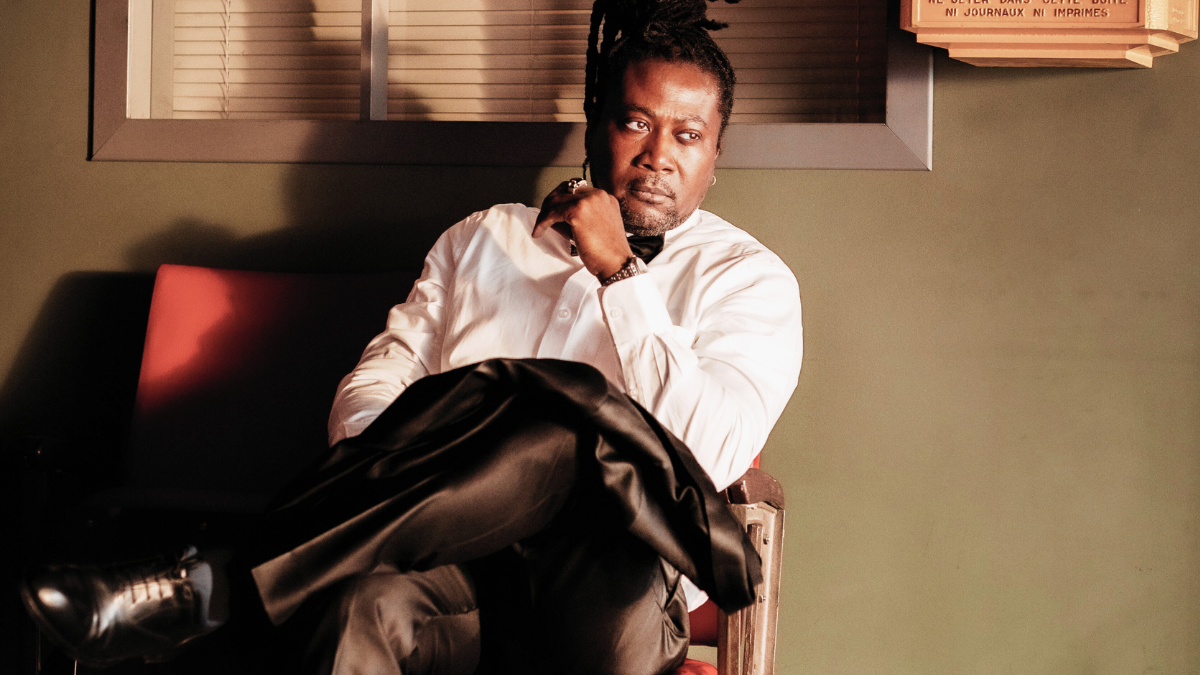
Early Beginnings: A Childhood of Creativity
Jephte’s love for storytelling began in his childhood. Growing up in Haiti, he would cut out paper silhouettes, align them with thread, and use a flashlight to project characters onto a makeshift screen. This early form of shadow puppetry allowed him to mimic voices and create stories, laying the foundation for his future in filmmaking. Music also played a significant role in his upbringing. As the seventh of nine boys in a large Christian family, Jephte started singing in church at the age of five. His family’s tradition of entertaining one another—through poetry, singing, and dancing—fostered his creative spirit.

Haiti: A Source of Inspiration
Haiti holds a special place in Jephte’s heart. Despite the media’s often negative portrayal of the country, Jephte describes it as a paradise filled with vibrant culture, music, and natural beauty. His early memories of Haiti are filled with joy—playing games, eating mangoes straight from the trees, and forming lifelong friendships. When his family moved to Canada, Jephte struggled with homesickness and depression. Haiti became a recurring theme in his dreams, a place he would revisit mentally to find solace and inspiration. Even as an adult, he traveled back to Haiti frequently, using the trips to rejuvenate his creative energy.
The Church and Early Questions
Growing up in a religious household, Jephte was deeply involved in the church. However, he began to question the narratives he was taught, particularly the lack of representation of Black people in religious imagery. These early questions about identity and representation would later influence his work as a filmmaker. Jephte’s departure from the church was not a rejection of faith but a search for truth and authenticity in storytelling.
A Journey to New York and Beyond
Jephte’s pursuit of his passion led him to New York in the 1990s, where he studied theater despite his parents’ wishes for him to become a lawyer. This decision marked the beginning of his independent journey. He worked tirelessly to pay for his education, immersing himself in the arts and honing his craft. After returning to Montreal, Jephte faced the harsh realities of the film industry. Despite his talent, opportunities were scarce, especially for a Black filmmaker in the 90s. Determined to tell his own stories, Jephte enrolled in film school, where he began to develop his unique voice.
Breaking Barriers in Filmmaking
Jephte’s career is marked by a series of groundbreaking projects. One of his early successes was editing a music video for the song “Due to the Interest” by Garou. Despite the director’s inexperience, Jephte stepped in to manage the set, ensuring the project’s success. The video became a buzz clip, earning praise from industry heavyweights like Luc Plamondon. However, Jephte’s refusal to accept a $2,000 bonus from the director highlighted his commitment to integrity over financial gain.
In 2003, Jephte produced “Haiti Through My Eye,” a docu-series that showcased Haiti’s rich culture and history. The project was a critical success and opened doors for future opportunities, including funding for his feature film “Exit 67.” Despite the challenges of securing funding and navigating the industry’s systemic barriers, Jephte remained steadfast in his mission to tell authentic stories.
The Draft: A Powerful Vision
One of Jephte’s most ambitious projects is “The Draft,” a film about a young Black hockey player whose dreams are shattered by a brutal act of racism. The story follows his journey as he mentors his younger brother, offering a new paradigm for success. Jephte describes “The Draft” as the most powerful film he has ever written, a project that challenges the status quo and highlights the resilience of marginalized communities.
However, the production of “The Draft” was not without its challenges. Jephte faced significant obstacles, including interference from unions and a lack of support from industry institutions, except Telefilm and Harold Greenberg Fund, who supported the project from the beginning. Despite these hurdles, he remained committed to the project, pouring his own resources and energy into bringing his vision to life.
The Struggles of an Independent Filmmaker
Jephte’s experiences shed light on the difficulties faced by independent filmmakers, particularly those from underrepresented communities. In Canada, the film industry is heavily reliant on government funding, which often comes with strict quotas and limitations. Jephte has faced numerous rejections and setbacks, including being blacklisted by medias after an interview. Despite these challenges, he continues to create, driven by his passion for storytelling and his desire to challenge societal norms.
A Legacy of Resilience
Jephte Bastien’s journey is a testament to the power of perseverance and creativity. From his early days in Haiti to his groundbreaking work in film, he has remained true to his vision, using his art to challenge stereotypes and inspire change. As he continues to work on “The Draft” and other projects, Jephte’s legacy serves as a reminder of the importance of representation and the enduring power of storytelling.
Business
Jephte Bastien: The Visionary Filmmaker Behind Exit 67 and The Draft
Whether through his portrayal of gritty urban landscapes or his exploration of the human spirit, Jephte Bastien continues to push the boundaries of cinema. As we await the premiere of The Draft, one thing is certain: Bastien’s journey as a filmmaker is just beginning, and the best is yet to come.
Published
8 months agoon
August 27, 2024By
Contributor
Jephte Bastien, the award-winning filmmaker renowned for his gripping storytelling and raw cinematic style, is set to captivate audiences once again with his upcoming film, The Draft. Best known for his debut feature film Exit 67, which garnered critical acclaim and won numerous awards, Bastien has established himself as a powerful voice in the world of cinema.
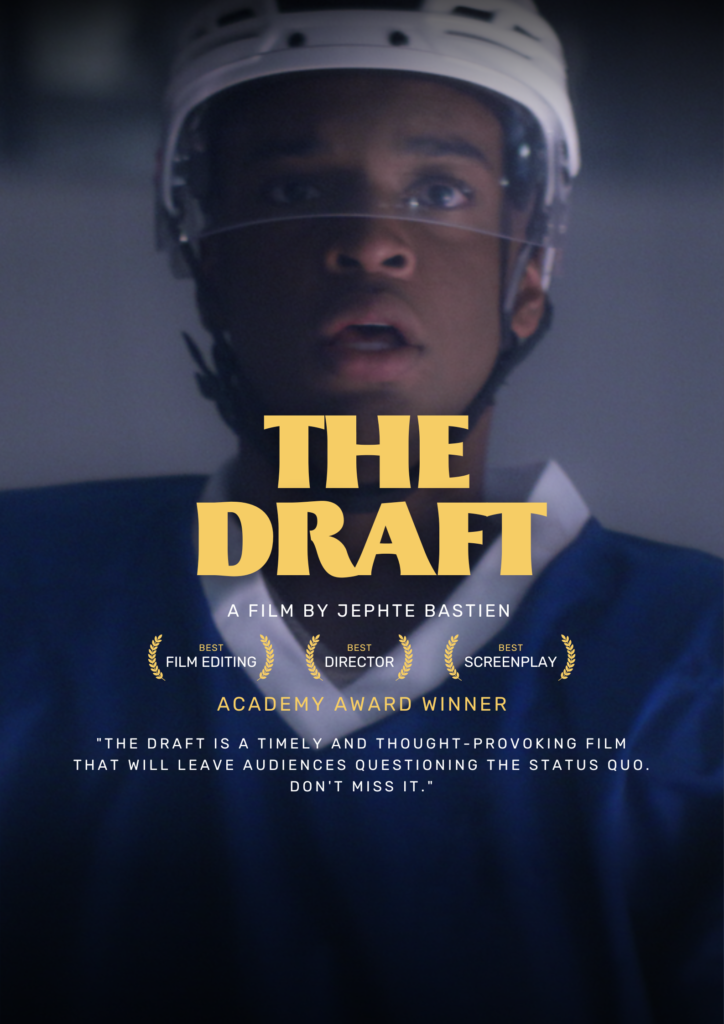
From Haiti to Canada: A Unique Perspective
Born in Haiti and raised in Canada, Jephte Bastien brings a unique perspective to his work, combining the rich cultural heritage of his homeland with the multicultural influences of his upbringing in Montreal. This blend of experiences has given Bastien a distinctive voice in filmmaking, allowing him to explore complex themes of identity, belonging, and the immigrant experience with authenticity and nuance.
Breaking Ground with Exit 67
Bastien burst onto the scene with his first feature film, Exit 67. Released in 2010, the film tells the story of a young man named Jecko, who is caught between the world of street gangs and his desire for a better life. Drawing from his own experiences and the reality of many young immigrants in Montreal, Bastien crafted a gripping narrative that resonated deeply with audiences and critics alike. The film’s success earned Bastien a Genie Award, cementing his status as a filmmaker to watch.
The Draft: A New Chapter
With his latest project, The Draft, Bastien is poised to once again capture the imagination of viewers. While details about the plot remain under wraps, the film promises to explore themes of power, corruption, and the human condition—elements that have become hallmarks of Bastien’s work. Set against a backdrop of political intrigue and moral dilemmas, The Draft is expected to be another compelling addition to Bastien’s filmography.
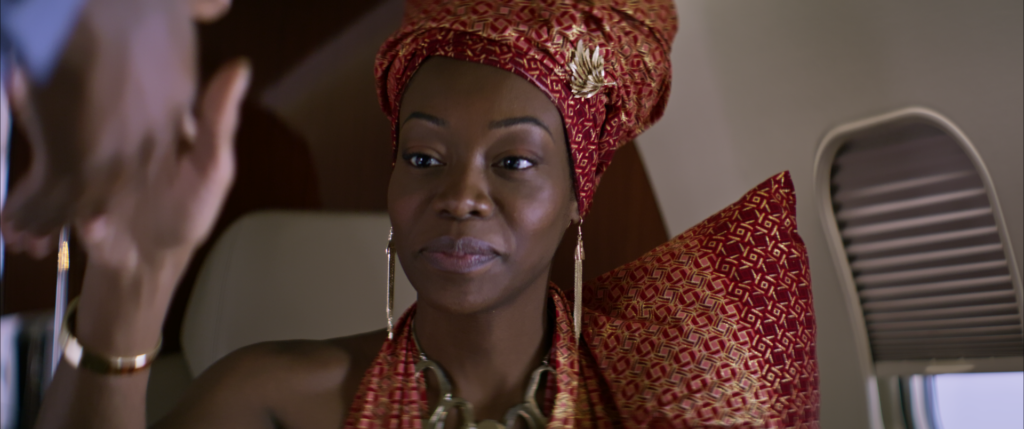
A Filmmaker with a Mission
Beyond his artistic achievements, Jephte Bastien is a filmmaker with a mission. He aims to tell stories that reflect the realities of marginalized communities and challenge societal norms. His films often delve into difficult subjects, shedding light on issues such as crime, poverty, and the immigrant experience, all while maintaining a deep sense of humanity and hope.
Looking Ahead
As Jephte Bastien prepares for the release of The Draft, anticipation is building among fans and critics alike. With his track record of compelling storytelling and his commitment to exploring important social issues, Bastien is sure to deliver another thought-provoking film that will leave a lasting impact.
Whether through his portrayal of gritty urban landscapes or his exploration of the human spirit, Jephte Bastien continues to push the boundaries of cinema. As we await the premiere of The Draft, one thing is certain: Bastien’s journey as a filmmaker is just beginning, and the best is yet to come.
https://www.imdb.com/title/tt19799652
https://www.imdb.com/name/nm3904454
https://www.instagram.com/the_draft_movie
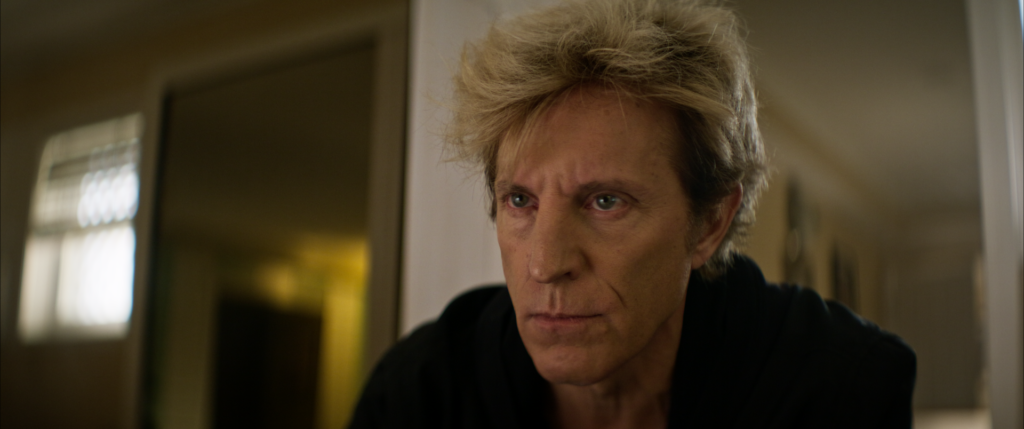
Business
“Spark Davidson: The Visionary Behind Montreal’s R&B Revolution”
THIS IS THE TRUE STORY OF SPARK AND HIS HUSTLE THAT NEVER STOPS AND NEVER SLEEPS AS HIS DREAMS BECOME REALITIES AND HAVE ALWAYS BEEN THE BIGGEST HE CAN IMAGINE.
Published
8 months agoon
August 7, 2024By
Contributor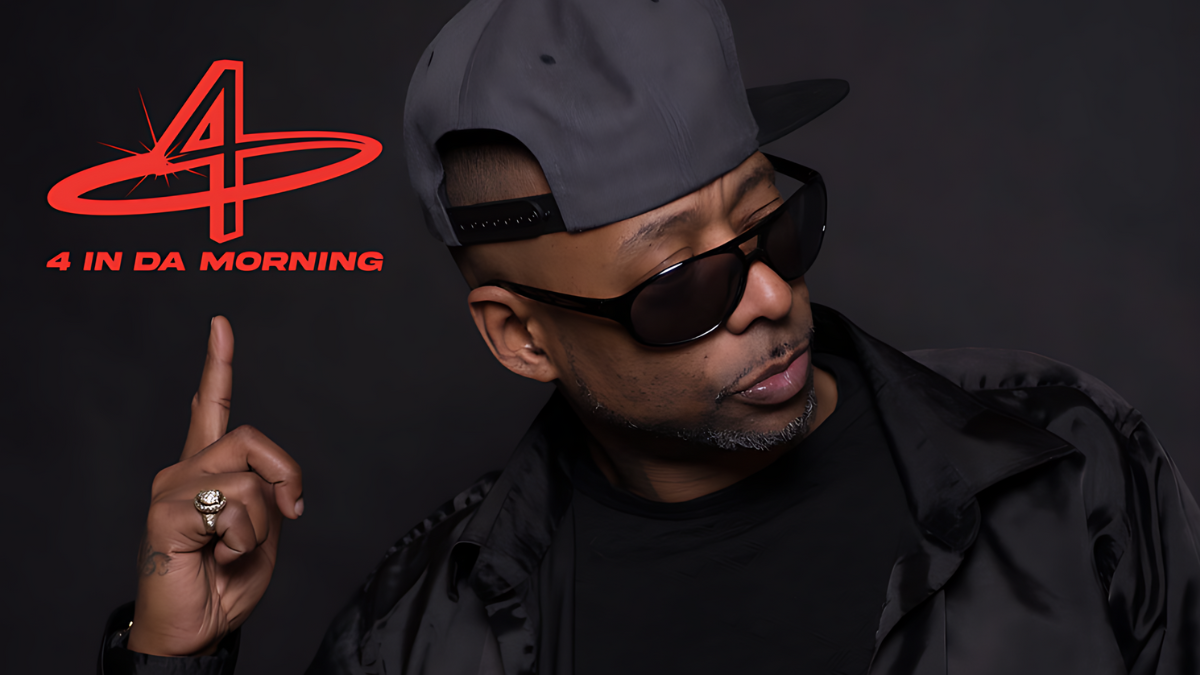
Spark Davidson, a Montreal-based artist, has made significant contributions to the music industry since launching his professional career in 1995. At the age of 28, Spark began managing multiple music groups, including his own R&B ensemble, “Portfolio,” featuring three of Montreal’s most talented vocalists: Alan Prater, Chris Millington, and Danny Blanco. With his keen eye for talent and innovative management style, Spark quickly established Portfolio as a powerhouse in the R&B scene. Within a year, the group achieved remarkable success, consistently selling out performances and captivating audiences with their soulful harmonies and dynamic stage presence.
Spark’s strategic negotiations for Portfolio’s publishing and recording contracts in both Montreal and Los Angeles further solidified his reputation as a savvy music industry professional. His efforts culminated in the launch of his own music production label, “4indamorning,” which rapidly became a household name in Montreal. Under his guidance, “4indamorning” emerged as a pivotal force in the local music scene, known for its distinctive sound and dedication to nurturing emerging talent.
Beyond his work with Portfolio, Spark Davidson’s influence extended throughout Montreal’s music community. His commitment to innovation and excellence helped elevate the city’s R&B and hip-hop genres, setting a high standard for artistic expression and collaboration. Spark’s ability to fuse traditional R&B elements with contemporary influences showcased his versatility and deep understanding of the evolving music landscape.
Spark’s impact on the music industry is a testament to his passion, creativity, and determination. As a manager, producer, and artist, he has left an indelible mark on Montreal’s music scene, inspiring a new generation of musicians and contributing to the city’s vibrant cultural tapestry. His journey from a rising artist to a respected industry leader is a remarkable achievement, reflecting his dedication to music and his unwavering pursuit of artistic excellence.
His latest music project IT’S ABOUT TIME -DA 4AM MIXTAPE ALBUM is available NOW

“Jephte Bastien: Crafting Cinema, Challenging Norms, and Championing Authentic Stories”

Jephte Bastien: The Visionary Filmmaker Behind Exit 67 and The Draft

“Spark Davidson: The Visionary Behind Montreal’s R&B Revolution”
Trending
-

 Business3 years ago
Business3 years agoThe Day Jordin Sparks Stopped Singing
-

 Business2 years ago
Business2 years agoCHRIS BROWN: The Top Recording Artist ALIVE [Vocal Range]
-

 Business3 years ago
Business3 years agoBenefits of Joining a Choir
-

 Business3 years ago
Business3 years agoChris Brown’s 12th Studio Album “Breezy”
-

 Business3 years ago
Business3 years agoFalsetto: The enduring love affair with the soaring male voice.
-

 Business3 years ago
Business3 years agoFood for Singers: The Diva Diet
-

 Business3 years ago
Business3 years agoTVM-TV LIVE
-

 Tech8 years ago
Tech8 years agoICONA POP


